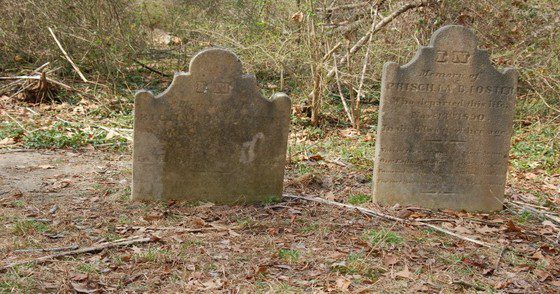Imagine this scenario: You’re a property owner in rural North Carolina – say, Vance County – and you come across what you think may be an old cemetery, unmarked and long-neglected. What’s a landowner to do?
Your first call could be to the N.C. Office of State Archaeology. A chat with staff archaeologist and historic cemetery specialist Melissa Timo may help.
Timo has been with the OSA since 2019, and she told Bill Harris and Mark Pace on the tri-weekly history segment of Town Talk that the state office has a couple of major goals: one is to create as complete a record as possible of cemeteries in the state; the second is to answer people’s questions about cemeteries, such as the proper process for gaining access to family cemeteries that may be on someone else’s property.
As genealogy has become more and more popular, individuals are seeking out family histories to help provide information to fill in gaps like births – and deaths – of ancestors.
Sometimes, the information is readily available. And sometimes, it takes a little more investigating, she said.
Back in the 1930’s, the Works Progress Administration (WPA) conducted a survey of cemeteries and that is a good place to start, Timo said, to see if a newly discovered cemetery had been previously recorded.
Although its purpose may have been to create a comprehensive list of cemeteries, it’s known that many were left off the WPA survey, Timo said. “We want to make sure we know where they are in the landscape,” she said, so they can be protected from development.
Landowners are not required by law to care for a cemetery, but keeping the grass trimmed or otherwise maintaining the property shows a respect for those buried there. They may not be your ancestors, but they are someone’s family, and descendants DO have the right to reasonably access a cemetery.
It’s a good idea to create a plan for visits to the cemetery, she said, including how family will gain access and specifying convenient times to do so.
And while landowners are required to maintain the cemetery, they are not allowed to dump yard waste or pull up stones, she said. Cemeteries are protected on both public and private land.
Sometimes cemeteries have marked graves and sometimes they do not. Gravesites used to be marked with fieldstone or with wooden markers, and often those either were unknowingly moved or gave way to the elements.
And even stone markers deteriorate over time, Timo said. The best way to try to read the words or names on an old tombstone is to use water and a soft-bristled brush to clean away the lichen, dirt and moss that may be obscuring what’s etched on the stone. Other tricks of the trade include wooden skewers and toothbrushes, but nothing metal. And definitely no power washers.
She said chemicals in cleaners are harmful to the old stone and should not be used. “Bleach is awful…it etches the stone really badly.” Any type of residue on the stone only invites microbial growth that causes further degrading.
“Sometimes, it’s just too late,” Timo said, to decipher what had been written on the stone. The combination of time, weathering and over-zealous cleaning efforts are a triple whammy.
The National Parks Service offers tips for preserving grave markers at https://www.nps.gov/tps/how-to-preserve/briefs/48-preserving-grave-markers.htm
Timo said the N.C. Site File is a registry that collects information about archaeology sites, structures and cemeteries. While not an exhaustive list, it does contain information that has been reported. The reporting form asks basic information like who is buried in the cemetery, or who you think is buried there.
“The one thing we’re firm on is getting a good location,” Timo said, so her office can pinpoint precisely where the gravesites are so they can be protected from being disturbed.
Timo said such precise information has helped in cases involving development of property.
“We’re able to warn people off, saying, ‘hey, there’s a cemetery here,’” she explained. “We can’t do that if we don’t have a pretty good location of where it is.”
Timo cited one case in Warren County that involved a family cemetery on a former plantation and a solar panel installation. The descendants estimated between 60 and 75 enslaved people were buried on the site. When the company hired experts to come in to determine exactly the size of the burial area, close to 300 gravesites were discovered.
The installation was able to continue, but the gravesites were not disturbed, she added.
Once an individual contacts OSA about a cemetery, Timo said the cemetery is assigned a file number and a pushpin on a map. She also shares the file number with the local contact so additional information can be provided in the future simply by referring to the file number.
“I will slip that right in,” Timo said, “so that there’s a permanent record…the state doesn’t throw anything away.”
